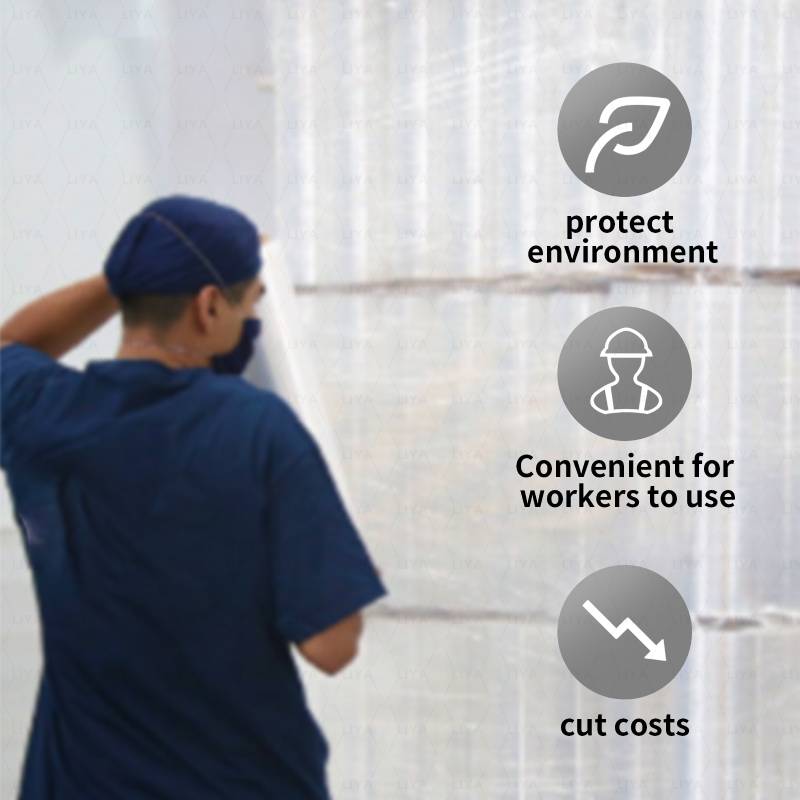Understanding the Benefits and Applications of PE Shrink Film in Various Industries
The Versatility and Applications of Shrink Film PE
Shrink film, particularly made from polyethylene (PE), has gained significant popularity across various industries due to its versatility and protective qualities. This article explores the features, benefits, and applications of PE shrink film, providing insight into why it is a preferred choice for packaging solutions.
What is Shrink Film PE?
PE shrink film refers to a type of plastic film that shrinks tightly around the item it covers when exposed to heat. Made primarily from polyethylene, it is available in different thicknesses and clarity levels. The two common types of polyethylene used for shrink film are low-density polyethylene (LDPE) and high-density polyethylene (HDPE). LDPE is more flexible and often used for packaging applications, while HDPE is more rigid and is found in heavier-duty applications.
Key Benefits of PE Shrink Film
One of the main advantages of PE shrink film is its strength. It provides an effective barrier against moisture, dirt, and other environmental factors, making it an excellent choice for protecting products during shipping and storage. Additionally, the film is lightweight and cost-effective, which helps to reduce shipping costs and enhance overall efficiency in packaging.
Another compelling benefit of PE shrink film is its clarity. The film is often crystal clear, allowing products to be displayed attractively while also ensuring that labels and branding are visible. This visibility can enhance marketing efforts and improve customer appeal, as consumers are more likely to purchase products that are showcased well.
shrink film pe

Moreover, PE shrink film is environmentally friendly. Many manufacturers are now producing biodegradable options, contributing to sustainability efforts. With increasing awareness of environmental issues, businesses are looking for eco-friendly packaging solutions, and shrink film made from PE is an attractive option.
Applications of Shrink Film PE
PE shrink film is extensively used in a variety of applications, due to its adaptability and performance. One of the most common uses is in the packaging of consumer goods. Products such as food items, beverages, hardware, and pharmaceuticals benefit from being wrapped in shrink film. In food packaging, for example, shrink film helps extend shelf life by providing an airtight seal that inhibits bacterial growth and moisture ingress.
In the retail sector, PE shrink film is often used for bundling products. It can secure multiple items together, such as cans, bottles, or boxes, making them easier to handle and transport. Additionally, this bundling promotes impulse buying, as multiple items displayed together can attract customers.
Another notable application of PE shrink film is in pallet wrapping. Businesses utilize shrink film to secure products on pallets, providing stability during transportation. This method not only protects the goods but also optimizes storage space and reduces the risk of damage.
Conclusion
In summary, shrink film PE is a dynamic packaging solution that benefits various sectors due to its strength, clarity, cost-effectiveness, and environmental credentials. Its wide range of applications, from food and beverage packaging to retail bundling and pallet wrapping, highlights its versatility. As businesses continue to seek efficient and sustainable packaging solutions, PE shrink film remains a popular and effective choice. Whether you’re a manufacturer, retailer, or distributor, incorporating PE shrink film into your packaging strategy can enhance product protection and improve market visibility.
-
Self Seal Bags: Secure, Clear, and Customizable Packaging for Every IndustryNewsAug.15,2025
-
Paper Cups: Bulk Solutions for Events, Cafés, and Eco-Friendly ServiceNewsAug.15,2025
-
Laminated Bags: Durable, Customizable Packaging for High-Impact BrandsNewsAug.15,2025
-
Grocery Bags: Smart, Sustainable, and Scalable Solutions for RetailersNewsAug.15,2025
-
Drawstring Bags: Versatile, Customizable, and Cost-Effective for Bulk UseNewsAug.15,2025
-
Disposable Gloves: Wholesale Solutions for Safety, Hygiene, and EfficiencyNewsAug.15,2025
-
Have the freedom of customizing your custom mailers any way you want! Our dedicated packaging support will help deliver you the mailing experience you need to elevate your shipping experience to the next level! Start making a strong impression on your customers and stand out from your competitors! -
LIYA uses high quality raw materials which directly purchased from large enterprises domestic and overseas such as PetroChina, Sinopec, Sabic, Equate, ExxonMobil, Dow Chemical, Total, and Borouge, ensuring the price advantage and quality of the raw materials. -
LIYA uses high quality raw materials which directly purchased from large enterprises domestic and overseas such as PetroChina, Sinopec, Sabic, Equate, ExxonMobil, Dow Chemical, Total, and Borouge, ensuring the price advantage and quality of the raw materials.





